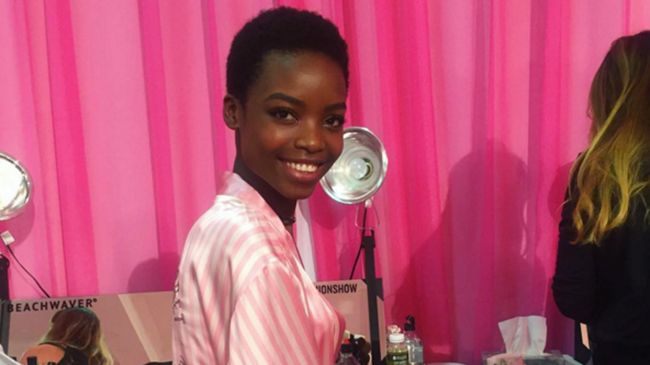
In 2015, more models than ever before rocked their natural texture on the runway and in print with a delectable blend of bravery and poise. Not only have we witnessed the shift on the catwalk and in front of the camera, but social media has given models a platform to be incredibly vocal about their experiences in the fashion industry.
How social media is playing a part
Models such as Nykhor Nyakueinyang have taken to Instagram to shine a blinding light on the very real issues they face regularly on set and behind the curtains. “I’m tired of complaining about not getting booked as a black model, and I’m definitely super tired of apologizing for my blackness!” she stated in a post earlier this year. It was an unapologetic open letter to “white people in the fashion world,” indicating that the lack of proper makeup for darker complexions was just not acceptable anymore.
The images of these models in magazines and ads are seen by millions of young women every day, and are amplified by the behind-the-scenes posts shared on blogs and social media. The highly anticipated annual Victoria’s Secret Fashion Show, for example, is watched by 500 million people, and is likely filling up your Instagram feed as we speak.
44 models walked in the Victoria’s Secret Fashion Show. Maria was one of only 8 black women–and the first VS model to rock an afro on stage.
This is why Maria Borges’s pioneering debut of her natural afro on the VS runway this week made such a splash. Forty-four models walked in the Victoria’s Secret Fashion Show–Maria was one of only eight black women and the first model in VS history to rock an afro. Other models, like British model Leomie Anderson, wore long, flowing wigs that matched fellow Angels, Adriana Lima and Kendall Jenner. Still, Leomie is no stranger to experiencing discrimination behind the scenes. On her personal YouTube channel, the Brit model shares personal accounts of the damage her hair goes through from hairstylists straightening it repeatedly and uneducated hairstylists wanting to use water on her hair to “lay it down.”
There’s hope for naturals in the industry
Maria was the only model who requested to wear her natural hair on the runway and, in so doing, she will reach millions of young women who may be feeling challenged in their own journey to accept their natural beauty, or perhaps inspire young girls who have yet to begin their transition from relaxed to natural. Maria’s powerful decision to proudly display her natural hair is giving women everywhere another example of beauty besides long, wavy wigs or extensions, and we hope the fashion industry will follow her lead.
These events mean so much more to an industry who, in 2015, still chooses to objectify natural-haired, black, female models for their features instead of taking the time to understand all the beautiful cultural aspects that make them who they truly are.
The industry still has quite a way to go. During Paris Fashion Week, model Lineisy Montero stole the Balenciaga show, being one of only three black models featured (and the only one wearing her natural hair”>. Because of her choice to sport her cropped afro, fashion blogs automatically labeled Montero as ‘versatile and compelling’, attempting to dispel any accusations that the industry’s business model is not all-encompassing. Despite the attempt at flattery, we don’t want to be fetishized for choosing to display what nature gave us.
These events mean so much more to an industry who, in 2015, still chooses to objectify natural-haired, black, female models for their features instead of taking the time to understand all the beautiful cultural aspects that make them who they truly are.
Does natural hair matter on the runway? Let me know!

